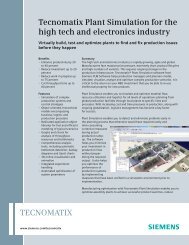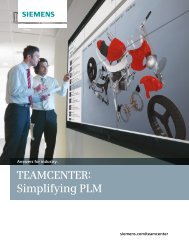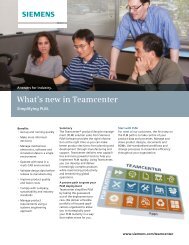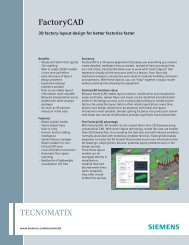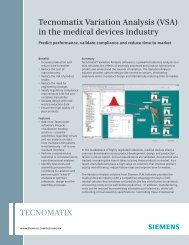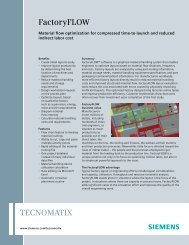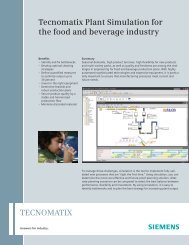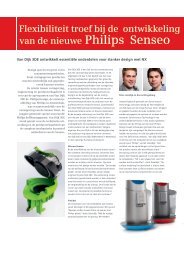Teamcenter Overview Brochure - TESIS PLMware
Teamcenter Overview Brochure - TESIS PLMware
Teamcenter Overview Brochure - TESIS PLMware
You also want an ePaper? Increase the reach of your titles
YUMPU automatically turns print PDFs into web optimized ePapers that Google loves.
Systems engineering and<br />
requirements management<br />
Advantages<br />
Mitigate risk by understanding<br />
product requirements, program<br />
constraints, engineering concerns<br />
and manufacturing/supply<br />
chain issues<br />
Combine systems level understanding<br />
with requirements to<br />
make better decisions<br />
Ensure you deliver the right<br />
product content at the right time<br />
to the right market<br />
Facilitate closed loop feedback<br />
by recognizing when intent is at<br />
risk and informing lifecycle<br />
stakeholders accordingly<br />
Requirements-driven product development.<br />
From Microsoft Office applications,<br />
you can define, capture, manage and control<br />
product requirements. You can link<br />
product requirements to downstream processes,<br />
providing visibility to source information.<br />
You can use workflow and change<br />
management capabilities to version,<br />
track, manage and route all changes.<br />
Integrated model-driven systems engineering.<br />
You can accelerate schedules and<br />
reduce risk by establishing a model of the<br />
product that defines all architectural, functional,<br />
logical, interface, connection and<br />
port objects which automatically populate<br />
the system definition and all variant conditions.<br />
You can link system requirements to<br />
diagram and object definitions, providing<br />
the traceability needed to assess the<br />
impact changes will have downstream.<br />
System analysis and verification. You<br />
can model, simulate, analyze and optimize<br />
critical system performance and subsystem<br />
interaction before generating<br />
physical prototypes. Because <strong>Teamcenter</strong><br />
supports tools for mathematical modeling,<br />
system computation and analysis, you can<br />
identify and correct system design or subsystem<br />
interaction issues earlier. As models<br />
evolve, <strong>Teamcenter</strong> manages the<br />
relationships to the design so you can<br />
assess the impact of changes downstream.<br />
Standardized corporate data dictionary.<br />
You can capture, manage and share<br />
signals/messages and associate them with<br />
interfaces between sub-systems. You can<br />
eliminate integration errors and ensure<br />
that the entire supply-chain is working<br />
from a common set of content. You can<br />
produce the Interface Control Documentation<br />
(ICD) or ISO documentation required<br />
for contract or regulatory compliance.<br />
4



